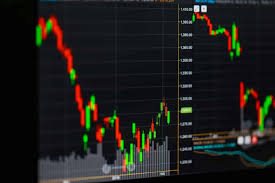
Maximizing Forex Trading Opportunities: Understanding Time Zones
In the world of forex trading, the concept of time zones plays a critical role in determining trading activity and market behavior. The forex market is unique in that it operates 24 hours a day, five days a week, but this does not mean that trading conditions are the same across all hours. In fact, understanding the various trading sessions can significantly enhance your trading strategy. For those looking for reliable Forex brokers, consider exploring forex trading time zones Uganda Brokers, which can provide valuable insights and resources for your trading journey.
Understanding the Forex Market Structure
The forex market is divided into four major trading sessions: the Sydney session, the Tokyo session, the London session, and the New York session. Each session corresponds with the working hours of the major financial centers around the globe. The overlap of these sessions also creates more volatility, which can present both risks and opportunities for traders.
The Sydney Session
The Sydney session kicks off the forex trading week, starting at 10 PM GMT on Sunday night and ending at 7 AM GMT on Monday. This session is somewhat quieter compared to others, as market participants are reopening after the weekend. However, it can still see sporadic trading activity, especially involving pairs with the Australian dollar or the New Zealand dollar. As this session transitions into the Tokyo session, the activity generally starts to pick up.
The Tokyo Session
The Tokyo session runs from 12 AM GMT to 9 AM GMT. During this period, traders focus largely on pairs involving the Japanese yen, alongside the Australian and New Zealand currencies. The Tokyo session is the first major market to open and is significant for tech stocks and commodity currencies due to Asia’s importance in global trade. When the Tokyo session overlaps with the Sydney session, traders can expect a modest increase in volatility, which can be advantageous for certain trading strategies.

The London Session
The London session is one of the most active trading sessions, running from 8 AM GMT to 5 PM GMT. This is when the majority of forex trading volume occurs, as London is home to many financial institutions and banks. During this period, major pairs such as EUR/USD and GBP/USD see considerable movements. The influx of traders during the London session can lead to significant price fluctuations, making it an ideal time for active traders looking for quick gains.
The New York Session
Following the London session, the New York session opens at 1 PM GMT and closes at 10 PM GMT. Similar to London, this session is characterized by high trading volume and volatility, particularly for USD-involved pairs. The overlap between the London and New York sessions (1 PM to 5 PM GMT) is often regarded as the most lucrative time to trade, given the heightened activity and potential price movements.
Identifying Overlaps for Optimal Trading
The overlaps between trading sessions are crucial for traders to understand, as they typically see increased volatility and liquidity. The two main overlaps occur between the Sydney/Tokyo sessions and the London/New York sessions. These overlap periods provide excellent trading opportunities, especially if traders can align their strategies with significant news events or economic announcements occurring during these times.
The Sydney-Tokyo Overlap
While the overlap between the Sydney and Tokyo sessions is not as prominent as others, it does allow for some trading activity, particularly for currency pairs involving the AUD, NZD, and JPY. This period sees traders executing positions ahead of major news releases from Japan, making it an essential time for those focused on Asian currencies.
The London-New York Overlap

The London-New York overlap is widely considered the best time to trade due to the high level of market participation. With many traders from both sessions active, the resulting liquidity and volatility can lead to significant trading opportunities. Major news releases and economic data released during this overlap can further determine price actions, leading to sharp movements in currency pairs.
Choosing the Best Times to Trade
When planning your trades, consider the following factors to help you determine the best times to enter the market:
- Volatility: Monitor economic calendars for key news releases and anticipated events that could impact volatility during specific sessions.
- Liquidity: Trade during peak hours when two major sessions overlap to ensure better spreads and execution times.
- Time Zone Awareness: Be mindful of your local time zone in relation to GMT to prepare for session openings and important market events.
Strategies for Different Forex Trading Sessions
Depending on the session, traders may wish to adopt various strategies to maximize their success:
- Scalping: Best suited for highly volatile sessions such as London-New York overlaps, where traders quickly enter and exit positions to capitalize on price swings.
- Day Trading: Focus on trends that are formed during the London session, as high liquidity can yield better opportunities for profit within the same day.
- Position Trading: Longer-term strategies can be employed when the market is less volatile, such as in the Sydney or Tokyo sessions.
Conclusion
Understanding the various forex trading time zones and the specific characteristics of each session is essential for developing a successful trading strategy. By leveraging the overlaps and staying informed about global economic events, traders can make more informed decisions and potentially increase their profitability. Whether you are a new trader or an experienced professional, adapting your strategies to align with the market’s rhythm can provide you with a significant advantage. Happy trading!
